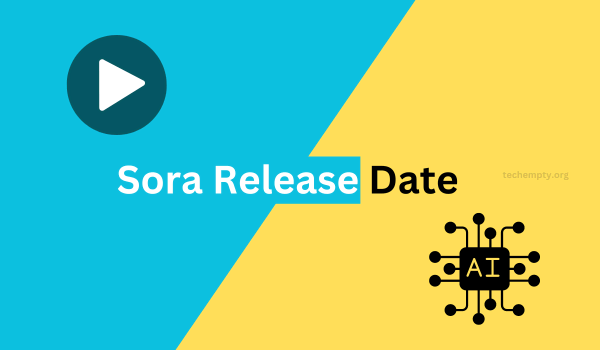On February 15th, 2024, OpenAI held a widely viewed press event to unveil their newest AI creation, Sora – a revolutionary text-to-video generation model poised to transform creative workflows. OpenAI CEO Sam Altman and Chief Scientist Mira Murati shared impressive demo videos highlighting Sora’s capabilities. They revealed new technical details on how the model was trained and the anticipated Sora release date.
The sneak peek videos showcased Sora creating detailed, photorealistic videos up to 60 seconds long from simple text prompts describing fictional scenarios. The videos adapt smoothly between different camera angles and extend existing footage seamlessly. Sora represents a massive leap forward from OpenAI’s acclaimed DALL-E image generation model to now synthesizing complex video scenes and animations.

Altman tweeted the hashtag “#AskSora” and responded to hundreds of Twitter prompts with custom videos generated by Sora in real time. The viral event created tremendous excitement about Sora’s imminent public release among creators, media analysts, and AI experts worldwide.
Path to the news
Sora’s Groundbreaking Capabilities
Under the hood, Sora utilizes a variant of OpenAI’s cutting-edge Diffusion model architecture to translate text into photorealistic videos with no computer graphics required. After training on a massive dataset of videos licensed from stock media providers and public domain footage, Sora learned to decode natural language and render it into dynamic video frames.
The model manipulates latent video embeddings in response to text instructions, adding or removing elements, adjusting camera position, lighting, motion, and more to match the described scene. This represents a breakthrough in conditional video generation compared to existing solutions like Runway ML’s Gen-2.
Sora also automatically tags each video with metadata to indicate its AI origins following the developing C2PA standard. And OpenAI revealed they are developing a specialized “detection classifier” to identify Sora-generated videos to combat misuse.
Limitations and Challenges
However, despite immense progress in teaching Sora AI video generators to interpret causal relationships and physical logic, Altman acknowledged significant limitations around reliably generating feasible, logically coherent videos. Especially with longer or more complex prompts, Sora may need help differentiating left versus right or making continuity errors between shots. OpenAI also highlighted issues around representing diverse skin tones accurately in generated videos thus far.
To mitigate potential harms, OpenAI stated they would restrict sexual, violent, dangerous, hateful, defamatory, and other prohibited content prompts. Text relating to underage, deceased, or unwilling individuals will also be blocked. Strict filters will govern celebrity likeness usage, given intellectual property concerns. Using adversarial prompts, Sora will undergo extensive testing to mitigate biases and potential misinformation tactics.
Leading misinformation experts and civil rights advocates who previewed Sora praised these commitments to ethics and safety. However, it cautioned that technology poses worrisome societal risks, given the potential power to manufacture compelling fake videos. They urged policymakers to hasten efforts around deepfake detection and video authentication standards to keep pace with AI.
Sora Release Date Still Unknown
Sora is still likely months away from any potential public release for all the marvels showcased already. The waitlist stands at over 400,000 people eager for access once testing is complete. However, OpenAI did not commit to a broader target timeline for opening Sora’s capabilities.
The company emphasized taking a deliberate, staged approach to responsibly launching such a potentially disruptive AI tool. OpenAI is assembling an advisory council to mitigate biases and gaming vulnerabilities in the system. And their security red teams are conducting thorough probes to identify failure modes and enhance Sora’s safety features.
Industry observers speculate OpenAI may initially launch restricted paid access to Sora in late 2024 based on its past model rollouts. However, priorities could shift to focus more on developing guardrails and oversight tools if testing reveals more significant dangers of misuse. For now, the public waits anxiously on the sidelines for their chance to tap into Sora’s creative potential.
Anticipated Short-Term Impacts
Analysts predict Sora will have massive impacts spanning media, advertising, entertainment, product design, education, telecommunications, defense, and more once deployed. Early use cases include graphics prototyping, data visualization, interactive tutorials, social media content, and the generation of video ads that are dynamically personalized to the viewer. OpenAI aims to lead the pack with Sora’s unparalleled quality and scope.
However, successfully managing community expectations versus capabilities and establishing necessary oversight pose tricky balancing acts for OpenAI’s leadership. Murati emphasized that launching safely demands proceeding carefully and deliberately despite intense public pressures.
Alternatives While Awaiting Sora Launch
As interest reaches a fever pitch, some Sora AI alternatives are emerging to satisfy demand in the interim while OpenAI finalizes Sora partially. Google teased an experimental video generation model called Lumiere at its recent I/O conference. Meta recently expanded access to its Make-A-Video platform, which creates short clips from text prompts.
Chinese startup Yeehaa also unveiled an app called Viva, allowing users to create AI-generated talking head videos from photos. However, based on initial testing, Sora’s versatility and polish differ from what is shown thus far. And Lumiere remains confined thus far to just Google AI researchers rather than any public release.
So, while the wait continues for OpenAI to open the floodgates to unleash Sora’s full capabilities, developers are releasing tools that provide a small window into the creative possibilities on the horizon once advanced video AI becomes mainstream.
The demos offer a teaser of the transformations likely coming to industries like advertising, entertainment, journalism, and education as synthetic video tech matures. And Sora’s impending arrival sets the stage for the most significant shift yet in our evolving relationship with creative AI.

